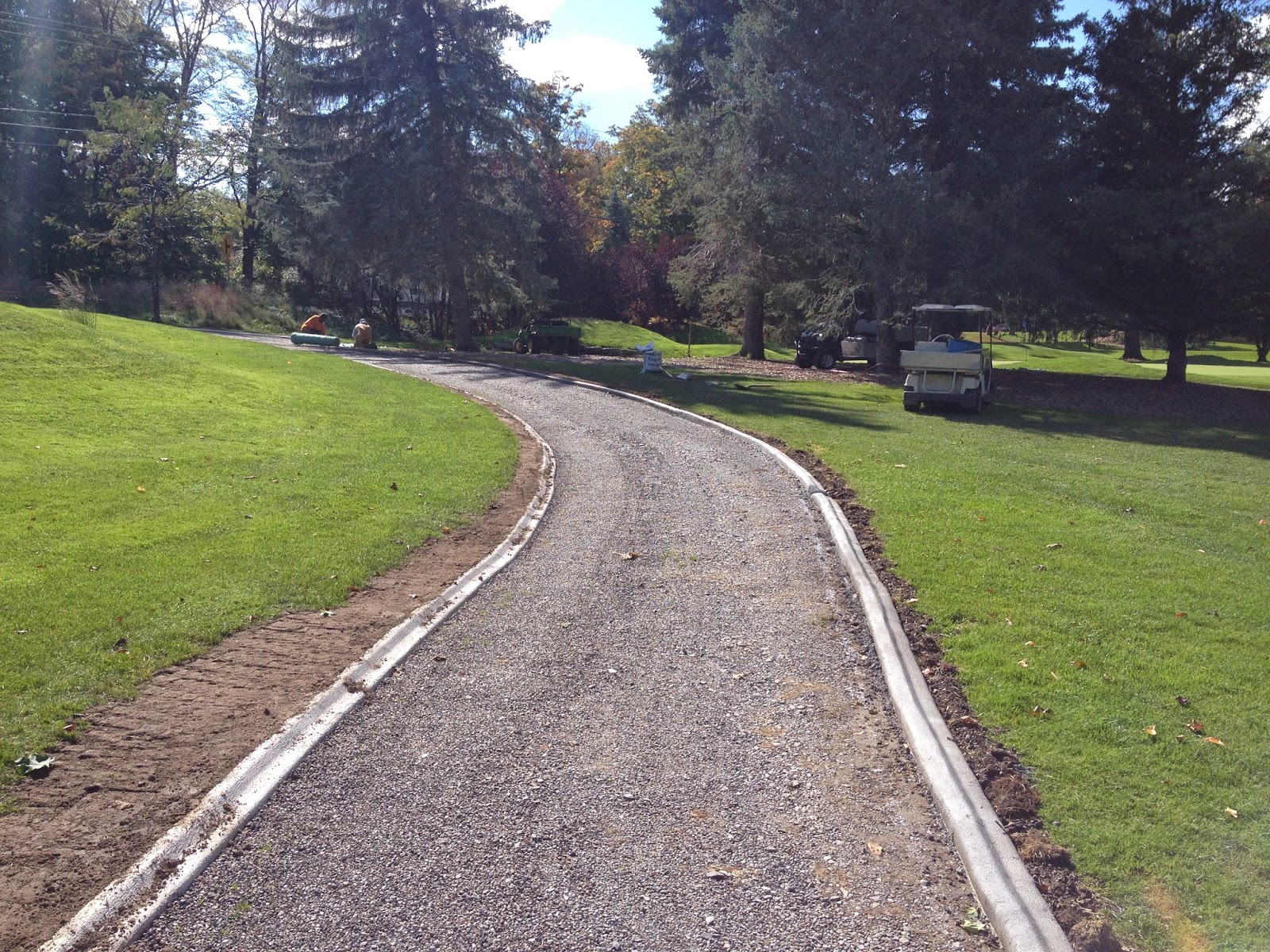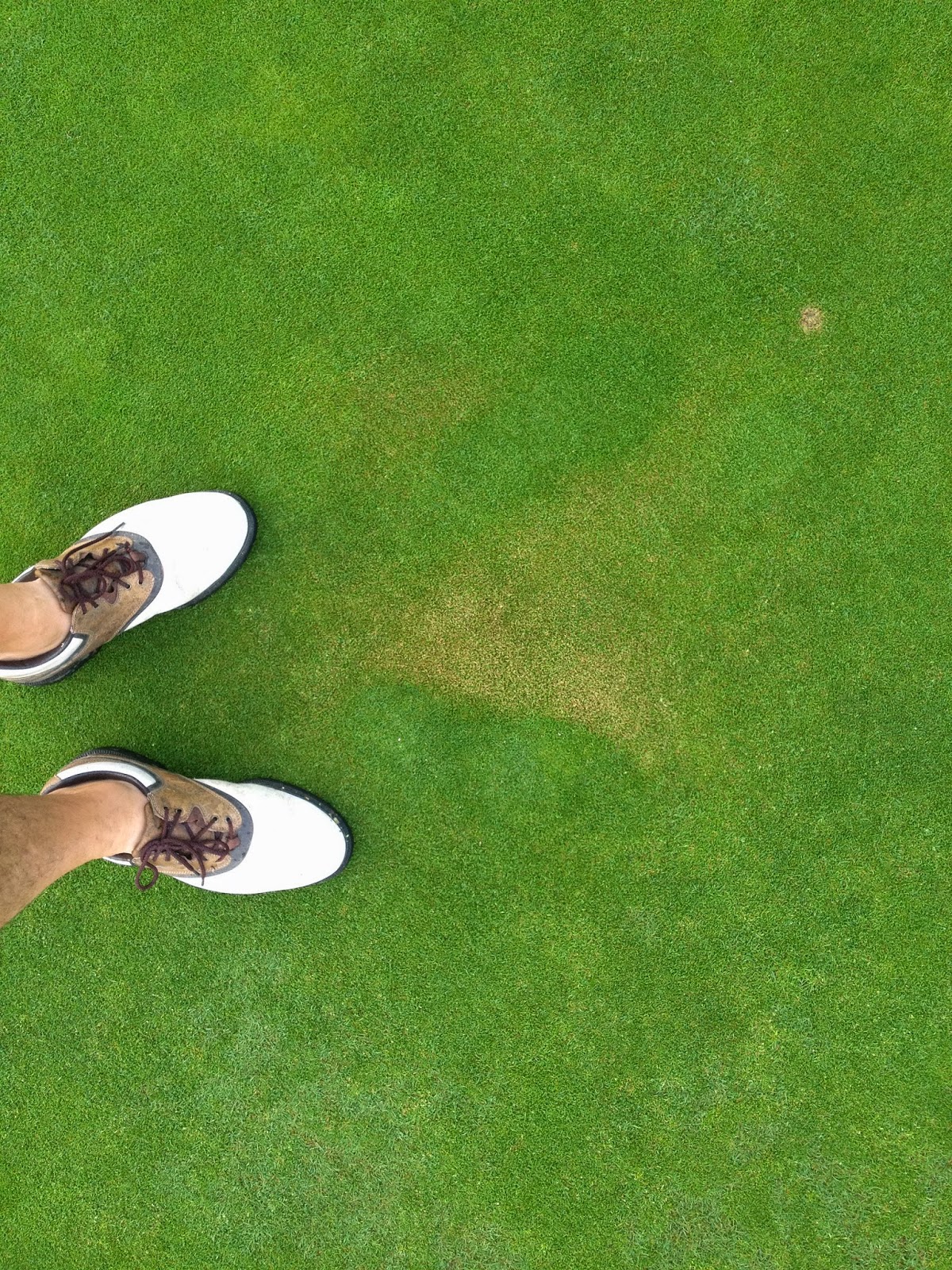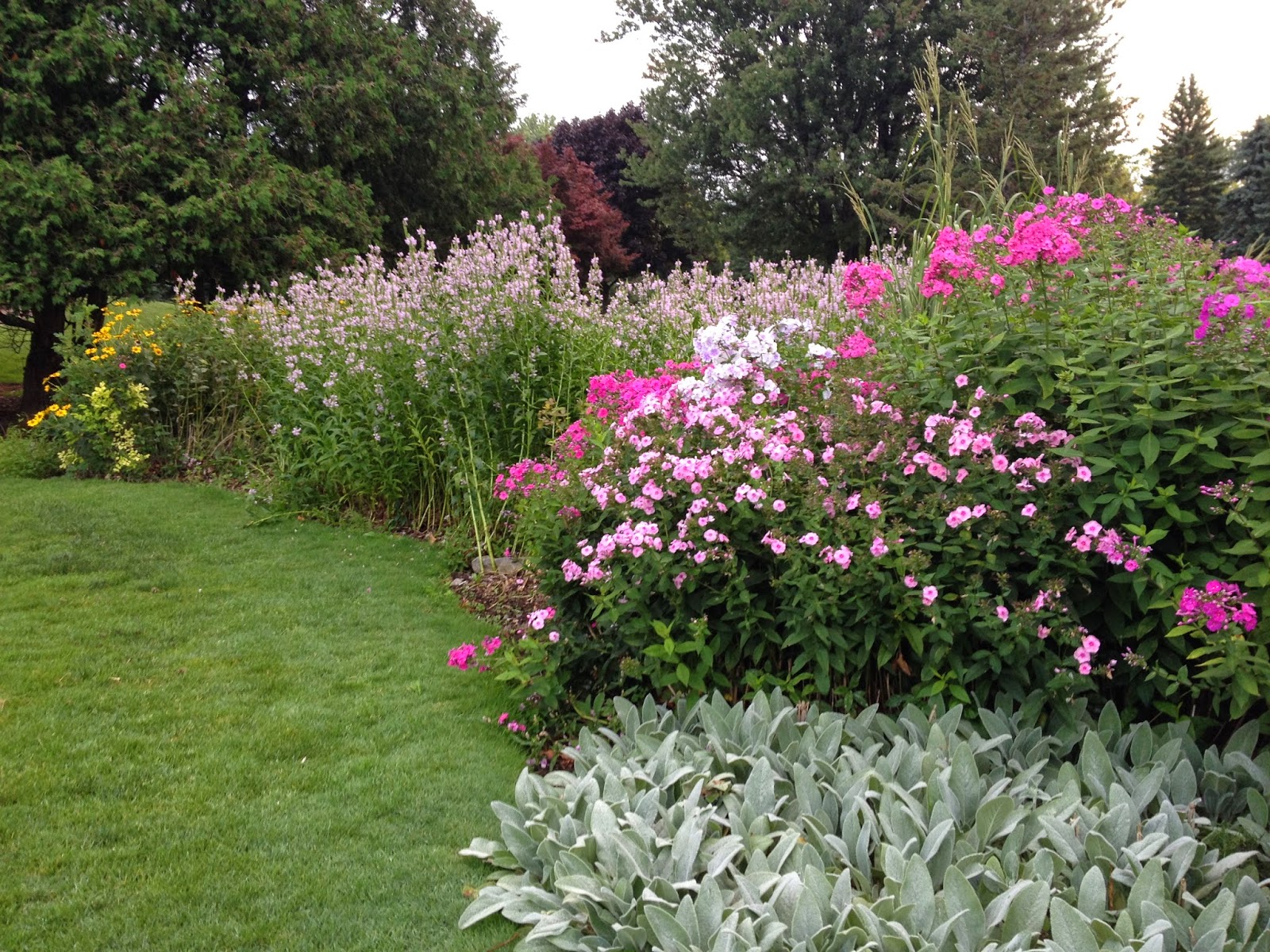Projects to round out the season are under way. We've completed several new curb
projects and will sneak a few more in before the season starts in 2015. In some places you'll see the curbs have a "high face" or a "low face". This is done on purpose to discourage cart traffic but to allow our mowers to get to where they need to go. 12 tee is a good example where you'll see the high face on the left, discouraging leaving the cart path early, and the low face nearer the tee, for our tee mowers to easily climb the bank.
We've also removed the potholes and deep swail in the back of 10 green. Water no longer sits anywhere on 10 green. All rain and irrigation is shed off the front and right. Green will be back in play on opening day 2015.
Over 15 trees will be removed this fall due to disease or because they're structurally unsound. Some of these trees are prominent on the course, but pose too great a risk due to their location and condition to remain standing.
Memorial Trees
The first batch of memorial trees have been ordered and are being picked up on Monday Nov 3rd. I expect to get them planted by the end of the week. Species for this round of orders were: Red Oak, Sycamore, Eastern Redbud, and American Beech. Plaques, as seen in the above picture, are available to order. I'm still waiting on the supplier to send samples but expect them any day. Cost of trees vary between $200 and $3000 depending on size and species. Contact Steve Kurta by my email or cell phone to get your order in and for help in choosing what kind of tree is best for you. We'll also have a planting window in the spring before the trees leaf-out. This will be an annual fall and spring offering, so, you needn't worry if you miss out on the timing this season.
Winter is Coming
In December I'll do a post reviewing the 2014 season and all the fun we had coming out of last winter. We've come a long way since then and I think we did pretty good considering what we were looking at for options.
Going into this winter I've done a few things differently already. I fertilized a little more in September and have let our greens grow out to a length where they will not struggle for their health as they harden off for winter (in spite of greens speeds).
Through the winter our options aren't much different than last year except for one. If we go through a major thaw and have standing water covering any greens in the middle of winter, I'll be out trying to remove as much of that water as I can. Whether that helps, I may never know, but it's something I can do that I know doesn't hurt. Other than that, we'll stick to the program that's worked well for the last 14 years.
Make Tracks
A cross-country ski trail and snowshoe track is being planned again. I'm looking for a used snowmobile to pull the groomer if anyone knows of one needing a home - doesn't have to run. I've got the parts for a pull-behind trail groomer so there will be room for skiers and snowshoe folks without bothering each others tracks. I'll keep you posted here on trail grooming schedules so you can plan your activities.





















































.JPG)
.JPG)



